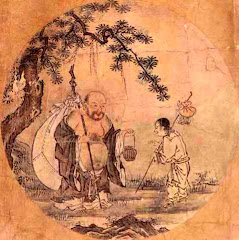
Three things which are not religion but which have become religion have to be understood. The first is: ritual. Ritual is not religion at all; in fact, ritual is a way of covering up your neurotic tendencies. It is neurosis. Giving a beautiful facade to it, giving it a religious garb, does not help. Neurosis remains neurosis; you only change the name. The neurotic mind moves in habits, routines – it is repetitive. It moves in a groove, it goes on doing the same thing again and again and again. Once it becomes religion then many neurotic people are thought to be religious.
That’s why in the East there are not so many mad people as there are in the West, and the reason is that in the West the ritual has disappeared, almost disappeared. So every neurotic has come out naked into the light. In the East the ritual is a protection. If somebody is doing a ritual you respect him: you think something significant is being done. All that he is doing is hiding his anxiety, keeping himself occupied with something. He is afraid of himself. He cannot face himself; he is afraid of coming across himself, he keeps himself occupied. Maybe he goes on turning the beads of his mala or he repeats ’Ram, Ram, Ram...’, or he does something repetitively every day. His ritual is not different from other, secular, rituals.
Smoking is a ritual – it keeps you occupied. So whenever a person feels nervous he starts smoking to avoid that nervousness. It becomes a beautiful occupation, but it is a religious ritual: taking the smoke in and then throwing it out, and taking it in and throwing it out. k is a mantra, it is a repetitive process. It makes one feel good – nervousness becomes occupied. When people are happy they forget smoking; when they are unhappy they immediately remember it.
So ritual is not religion – that has to be understood – and that is almost ninety percent of religion. And once you drop all rituals you are standing naked in the sunlight, and that is the beginning of the inner journey one has to face. If one is neurotic, then that neurosis has to be faced, one has to become aware of it, because only through becoming aware of it is it going to dissolve. Hiding it, keeping it somewhere in the basement, giving it a beautiful covering, is not going to help; it is not going to change it at all. So the really religious person is non-ritualistic.
The second thing: religion is not belief. To believe is to avoid inquiry. The person who believes, believes out of fear, not out of understanding. There is no need to believe if there is understanding. Understanding needs neither belief nor disbelief. It is the fearful mind: out of fear one wants to cling to some belief system. It gives solace, consolation. It makes one feel as if one knows, and one knows not. It gives you a false notion of knowledge, and deep down remains ignorance and darkness. It hides people’s stupidity. Only stupid people believe... and disbelieve, which are the same. It doesn’t matter whether you believe or disbelieve – it is stupid.
The intelligent person inquires. He will not believe in god, he will not disbelieve in god. He will not take any standpoint. He will say ’I will inquire, I will remain open. I will not move from an already accepted conclusion because then there is no movement, no possibility of movement. If I have already accepted something as true, the inquiry is finished. It is an abortion; now there is no point in inquiry. One has already taken a conclusion, a priori.’ The intelligent person inquires, he goes into inquiry. inquiry is arduous but it is beautiful too, because it is only through inquiry and the suffering and the pain and the ecstasies that come out of it that one grows.
And thirdly: religion is not morality. That is another deception. People become do-gooders. That is not true virtue – it is a camouflage. It brings respectability, it gives you a good ego feeling. It makes you feel that you are somebody important, significant – not only in the eyes of the world but even in the eyes of god – that you can stand upright, even encountering god; you can show all the good deeds that you have done. It is egoistic, and religion cannot be egoistic.
Not that a religious person is immoral, but he is not moral; he is amoral. He has no fixed character. His character is liquid, alive, moving moment to moment. He responds to situations not according to a fixed attitude, idea, ideology; he simply responds out of his consciousness. His consciousness is his only character, there is no other character.
If these three things are understood then one can understand what religion is. Religion is sanity – going beyond the neurotic mind. Religion is inquiry – going beyond belief systems and disbelief systems. And religion is consciousness – going beyond the confinements of character.




No comments:
Post a Comment